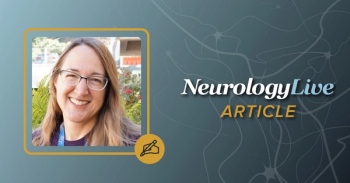
Diagnosing Pediatric MS and Ruling Out Other Disorders
The professor of neurology at Harvard Medical School discussed differentiating pediatric MS from other CNS disorders, as well as the process of treating and managing these patients.
Tanuja Chitnis, MD
Pediatric multiple sclerosis (MS), while similar to adult-onset relapsing-remitting MS in nature, presents unique challenges that only pediatric conditions can for the treating physicians.
For one, children experience 2 to 3 times more frequent relapses than adults with early MS, and that increased frequency has been shown to persist over at least the first 6 years of the disease.1-2 Tanuja Chitnis, MD, has also discussed how pediatric cases can be polysymptomatic at its presentation—as well as have increased risk during puberty—but children can recover from relapses in an average of 4 weeks, more quickly than adults, who often take up to 8 weeks to recover.3
To find out more about what differentiates pediatric MS from another central nervous system (CNS) disorder, as well as the process of treating and managing these patients, NeurologyLive® spoke with the professor of neurology at Harvard Medical School in an interview.
NeurologyLive®: What are the key things physicians need to know about pediatric MS?
Tanuja Chitnis, MD: Basically, there's really 3 major points to understand about pediatric MS. There is a very broad differential that is emerging in any child with demyelinating disorders, and this includes pediatric MS, cerebral arteriovenous malformations and neuromyelitis optica spectrum disorders, as well as anti-myelin oligodendrocyte glycoprotein (MOG) antibody associated conditions. It is very important to understand the differences between these different types of demyelinating or neuroinflammatory disorders, which can present in somewhat similar ways.
They do have different treatments and we are understanding the pathogenesis is different between these disorders. So, regarding treatment for pediatric MS, it's important to understand that this is a very inflammatory disorder. These young people, children and teenagers, have a high relapse rate as well as a very rapid accrual of new lesions, so it's important to think about high efficacy treatments. That's generally my practice.
What do you recommend doing when treating pediatric MS?
I look to starting high efficacy treatments either as first or very shortly after a second-line treatment. I monitor very closely and conduct an MRI within 6 months of starting any new treatment. If there are any new lesions that accumulate then I would move up to a second-line treatment very rapidly.
What goes into the diagnostic process?
For the diagnosis of pediatric MS, there are several tests that are important to send. One is the antibody test for MOG, as well as aquaporin-4. I usually do a spinal tap, and cerebrospinal fluid (CSF) analysis can also help to guide the diagnosis, including the presence of oligoclonal bands. The MRI pattern is also very important, and generally, pediatric MS does follow along with the MRI criteria for the McDonald MS criteria. We understand that this can help to differentiate children with MS from other disorders.
Is there anything that should be a focus aside from treatment?
In addition to treatment with pediatric multiple sclerosis, it's also important to think about management in a larger sense. In ensuring that the child has support at home as well as in school, we have a neuropsychologist who meets with our children and conducts testing. That's very important in instituting an individualized education plan, if needed, for that particular child.
It's also important to think about transitional care as these teenagers transition into an adult clinical setting to ensure that they have the support to both order their medications as well as make their appointments as easily.
REFERENCES
1. Gorman MP, Healy BC, Polgar-Turcsanyi M, Chitnis T. Increased relapse rate in pediatric-onset compared with adult-onset multiple sclerosis. Arch Neurol. 2009;66(1):54-9. doi: 10.1001/archneurol.2008.505.
2. Benson LA, Healy BC, Gorman MP, et al. Elevated relapse rates in pediatric compared to adult MS persist for at least 6 years. Mult Scler Relat Disord. 2014;3(2):186-93. doi: 10.1016/j.msard.2013.06.004.
3. Chitnis T. Role of puberty in multiple sclerosis risk and course. Clin Immunol. 2013;149(2):192-200. doi: 10.1016/j.clim.2013.03.014.
Newsletter
Keep your finger on the pulse of neurology—subscribe to NeurologyLive for expert interviews, new data, and breakthrough treatment updates.


























